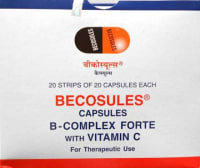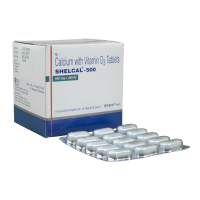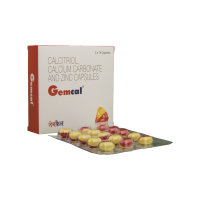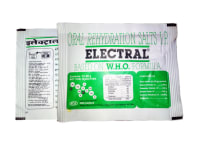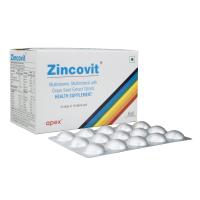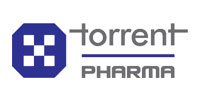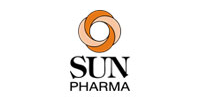USED FOR:
Bacterial infections
Allergic disorders
COMPOSITION:
Chloramphenicol Topical (10mg)
Hydrocortisone Topical (5mg/1g)
Therapeutic Uses:
anti infectives
derma

No interaction found

WEIGH RISKS VS BENEFITS
Biosone C Eye Ointment may be unsafe to use during pregnancy.Animal studies have shown adverse effects on the foetus, however, there are limited human studies. The benefits from use in pregnant women may be acceptable despite the risk. Please consult your doctor.

Biosone C Eye Ointment is probably safe to use during lactation. Limited human data suggests that the drug does not represent a significant risk to the baby.The baby's skin should not come into direct contact with the treated area of skin. Water-miscible cream/gel is preferred as ointments may expose the baby to harmful effects of Biosone C Eye Ointment via licking.

Biosone C Eye Ointment may cause blurring of your vision for a short time just after its use. Do not drive until your vision is clear.

Biosone C Eye Ointment is probably safe to use in patients with kidney disease. Limited data available suggests that dose adjustment of Biosone C Eye Ointment may not be needed in these patients. Please consult your doctor.

There is limited information available on the use of Biosone C Eye Ointment in patients with liver disease. Please consult your doctor.
Uses of Chloramphenicol Topical
Chloramphenicol Topical is used in the treatment of bacterial infectionsIt is used in infections of the ear and eyes.
How to use Chloramphenicol Topical
This medicine is for external use only. Take it in the dose and duration as advised by your doctor. Check the label for directions before use. Hold the tube close to the eye/ear without touching it. Gently squeeze the tube and place the medicine inside the lower eyelid or ear. Wipe off extra liquid.
How Biosone C Eye Ointment works
Chloramphenicol Topical is an antibiotic. It stops bacterial growth by inhibiting synthesis of essential proteins, required by bacteria to carry out vital functions.
Common Burning sensation, Stinging sensation.
Q. Is chloramphenicol bacteriostatic or bactericidal/ an antibiotic/does it contains penicillin/ does it contain steroids/ treat styes?
Chloramphenicol is an antibiotic and is both bactericidal (kills the bacteria) and bacteriostatic (inhibits the growth of bacteria without killing them) against numerous bacteria. No, it does not contain penicillin or steroids. It is used in the treatment of styes
Q. Does chloramphenicol sting/ does chloramphenicol cause dry eyes?
Chloramphenicol eye drops/ ointment may cause transient burning or stinging sensation. It does not cause but should be used with extreme precaution in patients with dry eye syndrome
Q. Is chloromycetin a penicillin/ an antibiotic/ with the formula/ chloromycetin is a drug for which disease?
Chloromycetin is a brand name for chloramphenicol. It is not penicillin. Chloromycetin cream is used in the treatment of infections of the eye surface and eyelids
Q. Is chloromycetin over the counter/ is obtained from?
No, it is available only with your doctor's prescription
Q. Is chloramphenicol and tetracycline similar?
Chloramphenicol and tetracycline are separate drugs with similar action. However, they are used to treat different types of infections
Q. Is Chloromycetin the same as chlorsig?
Both Chloromycetin and chlorsig contains chloramphenicol and are available in the form of ointment and eye drops.
Uses of Hydrocortisone Topical
Hydrocortisone Topical is used in the treatment of allergic disorders.
How to use Hydrocortisone Topical
This medicine is for external use only. Take it in the dose and duration as advised by your doctor. Check the label for directions before use. Hold the tube close to the eye/ear without touching it. Gently squeeze the tube and place the medicine inside the lower eyelid or ear. Wipe off extra liquid.
How Biosone C Eye Ointment works
Hydrocortisone Topical is a topical corticosteroid (anti-inflammatory medicine). It works by reducing redness, itching, and swelling caused by various skin conditions.
Common Skin thinning, Contact dermatitis.
Q. Is hydrocortisone topical safe?
Hydrocortisone topical is safe when used at prescribed dose and duration as advised by your doctor
Q. Is hydrocortisone topical good for ringworm, cold sores, haemorrhoids, scars or burns?
No. Hydrocortisone topical is contraindicated in any condition where the skin is infected or inflamed or has an open wound
Q. Does hydrocortisone topical help in eczema, acne, hives, dry skin and thrush?
Hydrocortisone topical relieves the itching associated with eczema and local swelling and itching associated with hives. It should not be used in acne, dry skin and thrush.


 Biosone C Eye Ointment
Biosone C Eye Ointment  Bookmark
Bookmark
